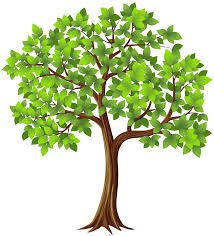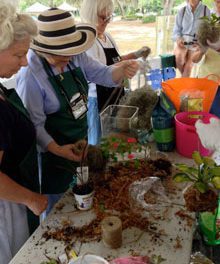 The garden in winter is never as quiet or inactive as I might wish, and this is emphatically true for gardens in the Lowcountry. While I might dream of several months off from the labors associated with keeping a garden healthy – things like weeding, pruning, digging up and dividing, adding mulch, etc – in fact, winter is a great time for doing just those jobs. Fortunately, not everything requires attention this season, unlike the rampant demanding growth everything shows once the weather warms up.
The garden in winter is never as quiet or inactive as I might wish, and this is emphatically true for gardens in the Lowcountry. While I might dream of several months off from the labors associated with keeping a garden healthy – things like weeding, pruning, digging up and dividing, adding mulch, etc – in fact, winter is a great time for doing just those jobs. Fortunately, not everything requires attention this season, unlike the rampant demanding growth everything shows once the weather warms up.
This does leave a tiny bit more time to spend on activities outside the garden, and catalog designers know just how to get you to devote hours to their purpose: to get you to spend your money on gorgeous new plants or bulbs or seeds.
Increasingly, I notice, more pages seem to be devoted to expensive items only marginally related to gardening – bird houses with columned verandahs, whimsical statuary (also known as “gnomes”), painted stones with slogans (“Frog Crossing”) written on them.
Such irrelevant paraphernalia have never been much of an attraction for me; and lately it seems that fewer of the gloriously photographed flowers and plants appeal to me enough to make me want to buy them.
Many of the new introductions, arriving with huge advertising budgets and ubiquitous “placements” on every garden show and in every garden column, ultimately disappoint. Often they succumb far too readily in our admittedly harsh garden conditions, melting in the heat or shriveling up because of fungal disease. The genetic parents of these showy disappointments often have proved themselves worthy, tough, and beautiful; but these progeny seem to have been bred with the same philosophy which has brought us the cardboard tomato. Or the dreadful Red Delicious apple.
The big companies’ catalogs, of course, are only marketing tools. They provide no clue to where their plants have been grown, and this can make a huge difference in how quickly and how well a young plant can adapt to our climate.
Caution is also advised in making purchases based on the photograph illustrating the plant or flower listed. The worst part is often the color as reproduced in the photograph, rarely an accurate portrayal of the actual color of the plant as it grows in one’s garden. Certainly, this may well be simply due to the limitations of color reproduction processes in printing. Far too many companies, however, devote considerable effort to “enhancing” the colors on the page, sometimes to the point of appearing grotesque.
Some have used (incompetently, it must be said) PhotoShop-like methods to create unrealistic images of a plant, exaggerating its size or altering its form. One south Georgia nursery’s catalogs regularly stick a picture of a little girl next to a vegetable to make the vegetable look huge, even though the child herself was obviously nowhere near the vegetable when the photo was taken.
Obviously, misrepresenting the plants that are available and listed for sale is common. But just as frustrating is to be unable to find any listing, any nursery offering a particular favorite or a long-sought after garden plant.
One such that I recently had trouble locating was the glorious Abelia chinensis, the Chinese abelia, a parent of the common abelia in so many of our gardens, Abelia x grandiflora. I had seen the plant on a visit to the garden of Gloria Farmer near Augusta, and I determined to get one for the garden here at the farm. It seems to grow a little taller than the common abelia, has a lovely form with branches reaching out and drooping toward the ground, and it blooms with large masses of blooms instead of the smaller profuse blooms along the stems of the common one.
Frustratingly, it was nowhere to be found, even though I searched sporadically for several years. Finally, recently, Gloria’s son Jenks located a few plants in Florida and set one aside for me. I noticed just now that Woodlanders in Aiken currently has it listed as well.
I can remember when the winter arrival of the Spring flower catalogs was a highly anticipated event. Nowadays, however, I try to stay on top of news about new plant introductions in Europe and America, knowing that most will now be heavily commercialized by the time they are available in our markets. The Spring catalogs are like flower porn, teasing and ultimately disappointing.
Far more fruitful, I find, are the regular visits I make – often accompanied by like-minded friends – to knowledgable nursery growers. The seasonal open houses some of the specialty nurseries have are much more addicting and much more rewarding than any catalog. But I have to admit, I still am on the mailing lists for every damn one of those catalogs!







